It looks like you're using an Ad Blocker.
Please white-list or disable AboveTopSecret.com in your ad-blocking tool.
Thank you.
Some features of ATS will be disabled while you continue to use an ad-blocker.
share:
I want to draw everyone’s attention, if I may, to what I consider to be one of the most remarkable aircraft projects ever undertaken; it is no
whizz-bang jet fighter or super secret stealth weapon, but it is just as remarkable as any of those in its own way.
This aircraft was the SARO P.192 flying boat and although the concept looks like wild, drug induced, flight of fancy by its designers, it was a genuinely serious proposal and was designed at the behest of shipping line P&O who saw that the coming of fast jet transports was going to cripple their business. Of course this plane never got built and P&O survive to this day, but this was seen as the future for them at the time and is by a long way the biggest and most ambitious aircraft ever seriously undertaken in Great Britain.
Some of you may have never heard of SARO, so, very briefly, the name is an acronym of ‘Saunders Roe’, the company was originally known as ‘S E Saunders’ after its founder but, in 1928, it was bought out by John Lord and Alliot Verdon Roe (founder of Avro) and it was renamed accordingly with its telegraphic address of ‘Saro’ soon being accepted as the company name.
Among the companies better known products are the Skeeter helicopter and the SR/A-1 which was the world’s first (and only) jet fighter flying boat.
After the war Saro set about staking its claim for the post war large flying boat transport market, which it had not yet become apparent would never materialise, they were 50% partners in the Short Shetland which was to have replaced the RAF Sunderland and BOAC Solent boats and it also had its eyes on the future with the largest flying boat ever built and flown in Britain, the ten engined Princess (see pic below).
Princess

In conjunction with developing the Princess Saro was also considering the next generation and designed the Duchess accordingly, without going into too much detail suffice it to say that, apart from it being a flying boat, the design parameters of the Duchess were directly comparable to the 707 and DC-8 transports of just a few years later. It might look silly now, but at the time it was felt there really would be a market for flying boat transports going forward into the future and TEA of Tasmania were actually negotiating an order at one point.
Duchess

This then in the background to why the following design was created and the spec’s are remarkable. The P.192 (to be known as the Saro Queen, but never officially named) was required by P&O to seat up to 1,000 passengers, more even that the A380!) and to do so in comfort, in addition it was to include bars, dining rooms and lounges for the elite passengers. To meet this demand Saro created a huge design with six passenger compartments on five decks, it was to be powered by 24 (twenty four) Rolls Royce Conway engines (four of which were ample for the 707 and VC-10) and to be able to maintain cruise with up to six of them shut down for maintenance. As can bee seen from the pictures they were mounted within the wing but well outboard so as to avoid the spray from the hull. The wings were deep enough for the engineers to be able to carry out maintenance standing up while the aircraft was in flight.
Here are the basic specs;
Length 318ft
Span 313ft
Height 88ft
All up weight 1,500,000lb
Powerplants 24 x Rolls Royce Conway turbofans each rated at 18,500lb thrust = total thrust 444,000lbs
Max Accomodation 1,000 passengers + freight
P.192 impression
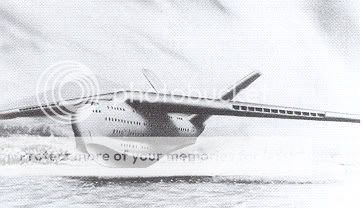
multi-deck accommodation layout
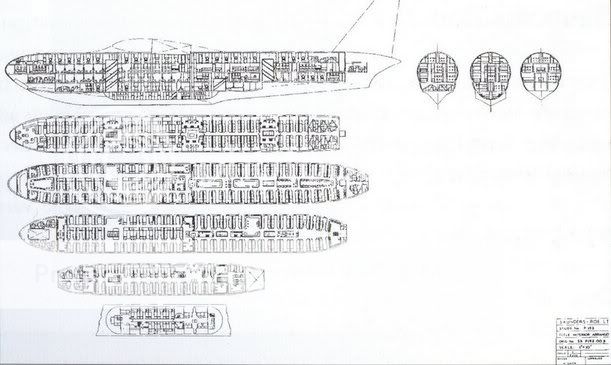
general arrangement
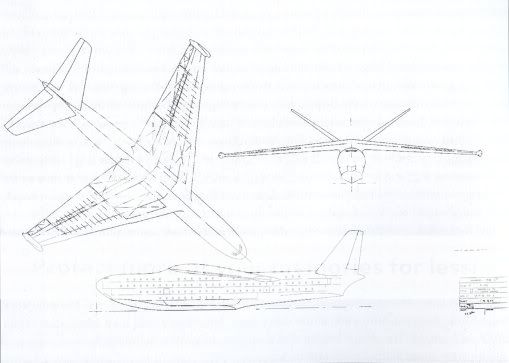
Of course the money to produce this leviathan was never forthcoming and there are many sound engineering reasons why such a project would not have worked, but to me the mere concept of it is enough to take your breath away.
[edit on 13-3-2006 by waynos]
[edit on 13-3-2006 by waynos]
This aircraft was the SARO P.192 flying boat and although the concept looks like wild, drug induced, flight of fancy by its designers, it was a genuinely serious proposal and was designed at the behest of shipping line P&O who saw that the coming of fast jet transports was going to cripple their business. Of course this plane never got built and P&O survive to this day, but this was seen as the future for them at the time and is by a long way the biggest and most ambitious aircraft ever seriously undertaken in Great Britain.
Some of you may have never heard of SARO, so, very briefly, the name is an acronym of ‘Saunders Roe’, the company was originally known as ‘S E Saunders’ after its founder but, in 1928, it was bought out by John Lord and Alliot Verdon Roe (founder of Avro) and it was renamed accordingly with its telegraphic address of ‘Saro’ soon being accepted as the company name.
Among the companies better known products are the Skeeter helicopter and the SR/A-1 which was the world’s first (and only) jet fighter flying boat.
After the war Saro set about staking its claim for the post war large flying boat transport market, which it had not yet become apparent would never materialise, they were 50% partners in the Short Shetland which was to have replaced the RAF Sunderland and BOAC Solent boats and it also had its eyes on the future with the largest flying boat ever built and flown in Britain, the ten engined Princess (see pic below).
Princess

In conjunction with developing the Princess Saro was also considering the next generation and designed the Duchess accordingly, without going into too much detail suffice it to say that, apart from it being a flying boat, the design parameters of the Duchess were directly comparable to the 707 and DC-8 transports of just a few years later. It might look silly now, but at the time it was felt there really would be a market for flying boat transports going forward into the future and TEA of Tasmania were actually negotiating an order at one point.
Duchess

This then in the background to why the following design was created and the spec’s are remarkable. The P.192 (to be known as the Saro Queen, but never officially named) was required by P&O to seat up to 1,000 passengers, more even that the A380!) and to do so in comfort, in addition it was to include bars, dining rooms and lounges for the elite passengers. To meet this demand Saro created a huge design with six passenger compartments on five decks, it was to be powered by 24 (twenty four) Rolls Royce Conway engines (four of which were ample for the 707 and VC-10) and to be able to maintain cruise with up to six of them shut down for maintenance. As can bee seen from the pictures they were mounted within the wing but well outboard so as to avoid the spray from the hull. The wings were deep enough for the engineers to be able to carry out maintenance standing up while the aircraft was in flight.
Here are the basic specs;
Length 318ft
Span 313ft
Height 88ft
All up weight 1,500,000lb
Powerplants 24 x Rolls Royce Conway turbofans each rated at 18,500lb thrust = total thrust 444,000lbs
Max Accomodation 1,000 passengers + freight
P.192 impression

multi-deck accommodation layout

general arrangement

Of course the money to produce this leviathan was never forthcoming and there are many sound engineering reasons why such a project would not have worked, but to me the mere concept of it is enough to take your breath away.
[edit on 13-3-2006 by waynos]
[edit on 13-3-2006 by waynos]
P.192 is my favourite...
That is awesome, pity they didn't try to build those... Huge planes...
Nice thread...
That is awesome, pity they didn't try to build those... Huge planes...
Nice thread...
Waynos I have a question for you.
Why did British design always put the engines inside the wing and not hanging from it, like american designs?
Cheers
Why did British design always put the engines inside the wing and not hanging from it, like american designs?
Cheers
They had some pretty wild ideas in the 50's and 60's, did they not? Flying boats, a flying car in every garage...wild. What happened to the
dreamers?
Beautiful, stunning, etc.
Wish Bill Gates or someone would have the vision to fund something like this !
CodexK
Wish Bill Gates or someone would have the vision to fund something like this !
CodexK
Carchorodon= It was because a lot (but by no means all) of the British designers, as well as some Russian ones, felt that the Jet allowed them to give
their aircraft a purity of form that had not been possible in the propeller age. This is best illustrated in the earliest examples of this practice
such as the Avro 698, DH Comet and Vickers Valiant prototypes (as well as this design here) where the plan view actually gives very little hint, if
any, as to where the engines actually are, this was seen as a major aerodynamic advance and the American practice (inherited from German designs) of
hanging them on the outside in pods was seen as backward thinking and even lazy! Worse than that, when the French Caravelle first appeared with its
rear mounted Avons on the outside of the fuselage it was openly ridiculed and laughed at. Germans also designed aircraft with buried engines but the
Americans quickly spotted which method would be best to adopt.
Of course what they completely failed to appreciate was the ease of not only maintenance this arrangement brought but also how much easier it was to convert the aircraft to take bigger engines, which in the Vulcan and Victor and later the Nimrod required a major redesign of the internal structure!
Of course what they completely failed to appreciate was the ease of not only maintenance this arrangement brought but also how much easier it was to convert the aircraft to take bigger engines, which in the Vulcan and Victor and later the Nimrod required a major redesign of the internal structure!
Codex, I was thinking earlier, if such a project was launched today it would probabaly look almost exactly the same (maybe with the An 225 tail) as
the basic design is actually quite sound, it certainly maximises internal volume, but it would fly very well indeed on the power of 6 trents,
proabably placed over the wing leading edge, like the An-72 but with three on each side. How cool would THAT look?
Maybe a little like this?
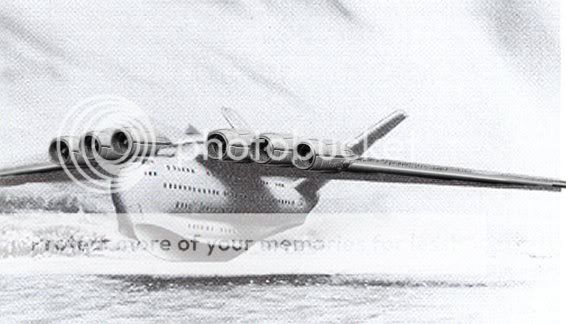
[edit on 13-3-2006 by waynos]
Maybe a little like this?

[edit on 13-3-2006 by waynos]
Yes , I'm just about to amend the specs with some further figures I have discovered
Damn, I can't. I'll just have to add them here;
Cruising speed 454mph at 40,000tf.
rate of climb (on 24 engines) 3,430ft/min
Take off run 4,500-8,000ft (quite a bit of margin for error there! - waynos)
range 1,900 miles.
flight crew = seven
cabin staff = 40
Intended for UK -Australia service starting out from Southampton with staging points at Alexandria, Karachi, Calcutta, Singapore and Darwin with the journey ending at Sydney (and vice versa of course) with the round trip lasting one week.
The smallest and lowest deck, as illustrated above, was the flight crew quarters and pursers office.
All controls to be fully powered (I should bloody well think so!)
[edit on 13-3-2006 by waynos]
Damn, I can't. I'll just have to add them here;
Cruising speed 454mph at 40,000tf.
rate of climb (on 24 engines) 3,430ft/min
Take off run 4,500-8,000ft (quite a bit of margin for error there! - waynos)
range 1,900 miles.
flight crew = seven
cabin staff = 40
Intended for UK -Australia service starting out from Southampton with staging points at Alexandria, Karachi, Calcutta, Singapore and Darwin with the journey ending at Sydney (and vice versa of course) with the round trip lasting one week.
The smallest and lowest deck, as illustrated above, was the flight crew quarters and pursers office.
All controls to be fully powered (I should bloody well think so!)
[edit on 13-3-2006 by waynos]
That looks the Dogs Cahuna's Waynos. The tail sets it off just right imo. I'd like to see it coming into land in Southampton or somewhere like
that.
It's bigger than some cruise ships I've seen tho ;-)
CodexK
It's bigger than some cruise ships I've seen tho ;-)
CodexK
If the project was done today, waht would be its specs?
I will use GE 90 115B engines* (115,000lbs of thrust). Use four instead of 6.
Reduce weight on the wings...
I like RR also, but the bigger engine comes from GE...
* It powers the Boeing 777 300ER and 200 LR
Any other specs?
What would you use to build it?
Aluminium alloys or composite materials?
Maybe add some winglets or raked wingtips...
[edit on 15-3-2006 by carcharodon]
I will use GE 90 115B engines* (115,000lbs of thrust). Use four instead of 6.
Reduce weight on the wings...
I like RR also, but the bigger engine comes from GE...
* It powers the Boeing 777 300ER and 200 LR
Any other specs?
What would you use to build it?
Aluminium alloys or composite materials?
Maybe add some winglets or raked wingtips...
[edit on 15-3-2006 by carcharodon]
Originally posted by waynos
Of course the money to produce this leviathan was never forthcoming and there are many sound engineering reasons why such a project would not have worked, but to me the mere concept of it is enough to take your breath away.
Im so sorry but I cannot help myself "What no launch aid????" okay back on point
Is it possible that they looked at the Spruce Goose problems and decided that it was not feasable? With no computer to model the design, they may have thought the risk was too great. I like the P192 model myself, but your variant with the 'upper surface blowing" engine placement gets my vote.
The Spruce Goose and its problems may well have played a part but I think it is more to do with the fact that the Princess, which flew perfectly well
and with turbprops was, at the time, 'bang up to date' remained unsold, Even the RAF, who were offered three for free didn't want to know and they
realised the age of the flying boat was over. P&O would never have bought more than 5 of them (if that) and the economics just wouldn't stack up, and
the risk?
Carchorodon, I think you could well get away with four engines (whether GE or Rolls) I just said Trents as the first name that came into my head and put six on because six slightly smaller engines might be better for getting the USB effect across more of the span to get this monster off the water, which may or may not be needed, its only a flight of fancy anyway
[edit on 15-3-2006 by waynos]
Carchorodon, I think you could well get away with four engines (whether GE or Rolls) I just said Trents as the first name that came into my head and put six on because six slightly smaller engines might be better for getting the USB effect across more of the span to get this monster off the water, which may or may not be needed, its only a flight of fancy anyway
[edit on 15-3-2006 by waynos]
I know Waynos
BTW is carcharodon as in carcharodon carcharias aka The Great White Shark....
The reason it didn't make it is the same reason air mammoths never make it. They are too big to be a good business. The economic of a plane that big is always very difficult. Granted if you fill it up its great, however is very likely that you can never fill it up...
Also having something that big flying is always a problem regarding construction, efficiency, etc.
Airbus is having enormous problems with the A380. The most recent one being the wings failing the static resistance test, having problems with the evacuation on the plane and the fact that aircraft produces an enormous vortex and weights a lot more than what was planned. And that is with 21st century technology at arguably one of the most technologically advanced companies in the world.
[edit on 15-3-2006 by carcharodon]
BTW is carcharodon as in carcharodon carcharias aka The Great White Shark....
The reason it didn't make it is the same reason air mammoths never make it. They are too big to be a good business. The economic of a plane that big is always very difficult. Granted if you fill it up its great, however is very likely that you can never fill it up...
Also having something that big flying is always a problem regarding construction, efficiency, etc.
Airbus is having enormous problems with the A380. The most recent one being the wings failing the static resistance test, having problems with the evacuation on the plane and the fact that aircraft produces an enormous vortex and weights a lot more than what was planned. And that is with 21st century technology at arguably one of the most technologically advanced companies in the world.
[edit on 15-3-2006 by carcharodon]
Orionblamblam -the source of the original pictures I used was the Book 'Stuck on the Drawing Board' Here is a scan of its cover showing the DH Comet
5 and VTOL version of the BAC One Eleven.
The project is also detailed in 'Saunders and Saro Aircraft since 1917' by Peter London which is one of the Putnam series of books dedicated to individual manufacturers.
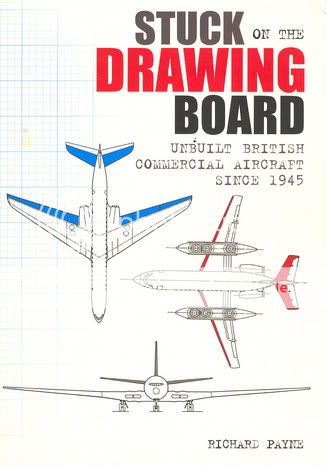
Could you post some information on the two pictures you posted? For example the first one looks very much like a Boeing but when does it date from and what is the story behind it?
Carcharodon; I also feel I should correct you regarding the A380, there are problems but only the normal ones for any new type, also the wing didn't fail the test, it just didn't pass it by the predicted margin, but even then only by 0.03, an insignificant margin. The wing was supposed to fail at 1.5 times its structural load limit, instead it failed at 1.47 which equates to a 47% higher loading than it can ever be realistically expected to experience. I'm sure you'll agree that is very different from failing the test.
The reporting of that story reminds me of something I read regarding the cancellation of the TSR 2, when Healey was wavering over supporting the decision those pressing for cancellation informed him how the wing structure had failed under test. They weren't lying, but what they failed to mention was that it was being tested to destruction! The Airbus story is similar with most headlines zooming in on structural fauilure without mentioning that was the whole point of the test in the first place.
[edit on 16-3-2006 by waynos]
The project is also detailed in 'Saunders and Saro Aircraft since 1917' by Peter London which is one of the Putnam series of books dedicated to individual manufacturers.

Could you post some information on the two pictures you posted? For example the first one looks very much like a Boeing but when does it date from and what is the story behind it?
Carcharodon; I also feel I should correct you regarding the A380, there are problems but only the normal ones for any new type, also the wing didn't fail the test, it just didn't pass it by the predicted margin, but even then only by 0.03, an insignificant margin. The wing was supposed to fail at 1.5 times its structural load limit, instead it failed at 1.47 which equates to a 47% higher loading than it can ever be realistically expected to experience. I'm sure you'll agree that is very different from failing the test.
The reporting of that story reminds me of something I read regarding the cancellation of the TSR 2, when Healey was wavering over supporting the decision those pressing for cancellation informed him how the wing structure had failed under test. They weren't lying, but what they failed to mention was that it was being tested to destruction! The Airbus story is similar with most headlines zooming in on structural fauilure without mentioning that was the whole point of the test in the first place.
[edit on 16-3-2006 by waynos]
Point taken Waynos, I did not know the specs of the test. However they are having real problems the weight issue and the vortex issue are very
real...
Nevertheless the whole point was that making such an enormous aircraft is very difficult because of the enormous challenge and if it is today I would guess that 50 years ago would have been impossible.
Nevertheless the whole point was that making such an enormous aircraft is very difficult because of the enormous challenge and if it is today I would guess that 50 years ago would have been impossible.
Originally posted by carcharodon
Nevertheless the whole point was that making such an enormous aircraft is very difficult because of the enormous challenge and if it is today I would guess that 50 years ago would have been impossible.
Well, yes. Absolutely. The thought of anyone trying to build and fly this monster in 1955 is mind boggling
new topics
-
Almost Home
Short Stories: 54 minutes ago -
Kamala finally builds a wall...around her home in DC
Jokes, Puns, & Pranks: 1 hours ago -
Ok Melbourne, Really?
Music: 3 hours ago -
Predictions for the result
2024 Elections: 6 hours ago
top topics
-
Predictions for the result
2024 Elections: 6 hours ago, 10 flags -
Both KAMALA and OBAMA are on the Nov 5th 2024 Ballot - If One Loses - Both Lose.
2024 Elections: 17 hours ago, 8 flags -
Kamala finally builds a wall...around her home in DC
Jokes, Puns, & Pranks: 1 hours ago, 5 flags -
Almost Home
Short Stories: 54 minutes ago, 3 flags -
Ok Melbourne, Really?
Music: 3 hours ago, 1 flags
active topics
-
Betting markets have Trump by a good bit
2024 Elections • 180 • : YourFaceAgain -
-@TH3WH17ERABB17- -Q- ---TIME TO SHOW THE WORLD--- -Part- --44--
Dissecting Disinformation • 3099 • : Blueracer -
Trump thinks Liz Cheaney should be shot in the face?
US Political Madness • 106 • : YourFaceAgain -
Kamala finally builds a wall...around her home in DC
Jokes, Puns, & Pranks • 3 • : nugget1 -
Predictions for the result
2024 Elections • 70 • : putnam6 -
Fraudulent Pennsylvania Voter Registrations Traced to Democat-linked Company: District Attorney
2024 Elections • 46 • : YourFaceAgain -
Steal the vote alive and well
2024 Elections • 69 • : YourFaceAgain -
Mood Music Part VI
Music • 3686 • : BrucellaOrchitis -
Transgender woman accuses Hooters of sex-based discrimination for refusing to hire her
Rant • 19 • : YourFaceAgain -
British Man Jailed for over 2 Years for Shouting at Police During Protest has Died in Prison
Social Issues and Civil Unrest • 28 • : BrucellaOrchitis
